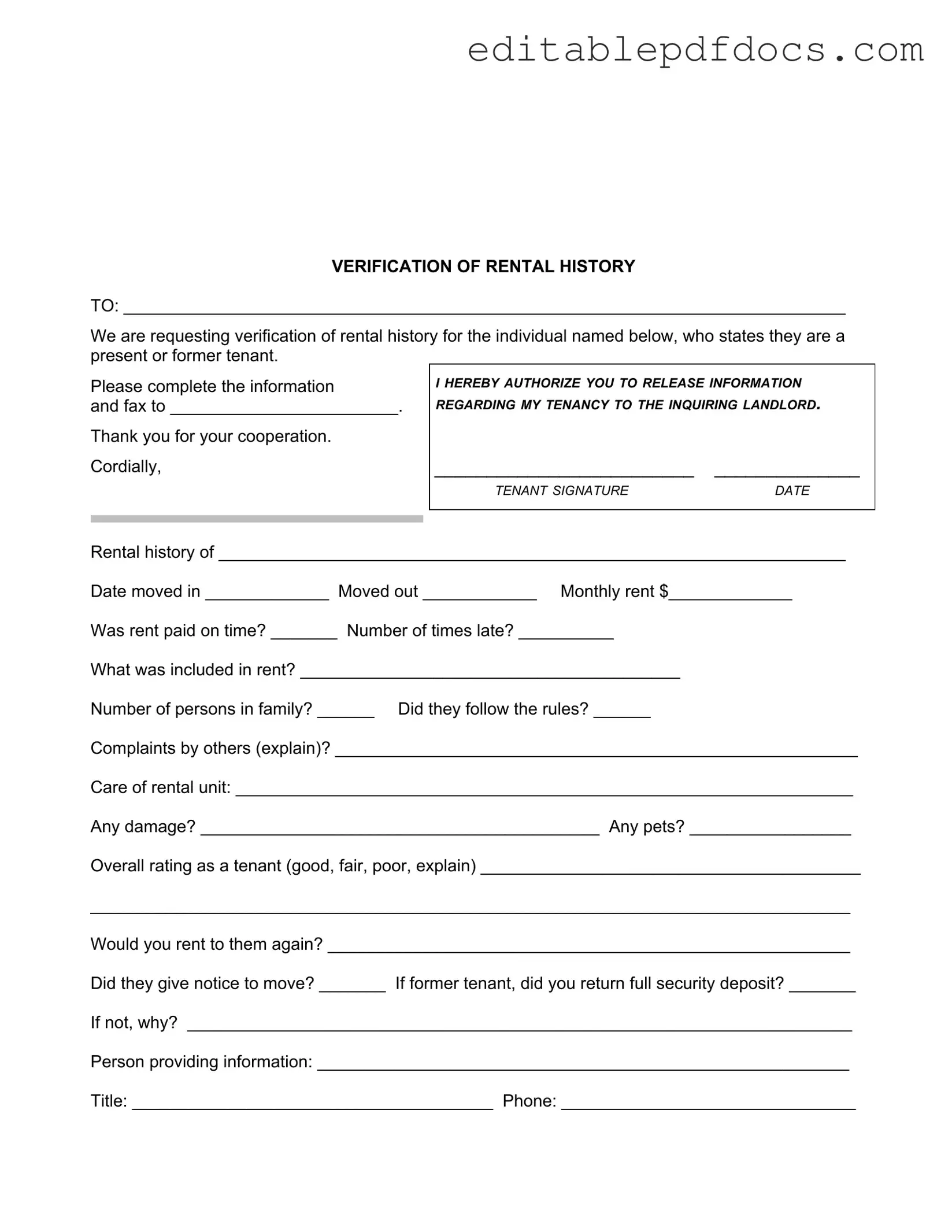Filling out the Verification Rental form can be a straightforward process, but many individuals make common mistakes that can lead to confusion or delays. One frequent error is failing to provide complete and accurate information. For example, if the rental history section is left blank or contains incorrect dates, it can hinder the verification process. It is essential to ensure that all fields are filled out accurately, including the dates of tenancy and the monthly rent amount.
Another mistake is neglecting to authorize the release of information properly. The section that requires the tenant's signature must be completed with care. If this authorization is missing or improperly signed, the landlord or property manager may be unable to obtain the necessary information. This step is crucial for ensuring that the inquiry is legitimate and that the tenant's privacy is respected.
People often overlook the importance of specifying the details regarding the tenant's behavior. For instance, when asked about whether rent was paid on time, some may provide vague responses instead of specific numbers. This lack of clarity can lead to misunderstandings. It is better to indicate the number of late payments clearly and provide any relevant context, such as reasons for the delays.
Another common error is not addressing complaints from neighbors or other tenants. If there were issues, they should be noted in the appropriate section. Ignoring this part may give an incomplete picture of the tenant's history. On the other hand, if the tenant had a good record, it is beneficial to mention that as well, as it can help paint a fuller picture of their tenancy.
In addition, many people fail to include contact information for the person providing the verification. This omission can create difficulties if the landlord needs to follow up for further details. Providing a title and phone number ensures that the inquiry can be completed without unnecessary delays.
Lastly, some individuals do not take the time to review the entire form before submission. This oversight can lead to minor errors that could have been easily corrected. Taking a moment to double-check all entries can prevent miscommunication and ensure that the verification process goes smoothly. A thorough review can make a significant difference in the outcome of the rental application.
